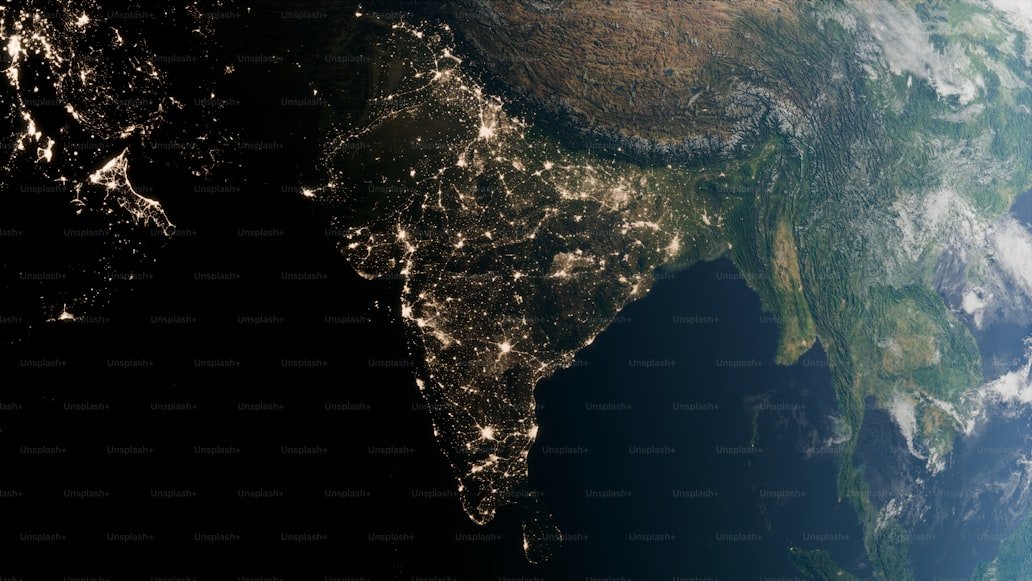India is a vast and colorful land with incredible diversity, rich history, and an extraordinary culture. One of the first questions that pops into people’s minds when learning about India is, “How many states are there in India?” The answer is both straightforward and fascinating. In this blog post, we’ll take a deep dive into the number of states in India, explore their unique features, and uncover some surprising facts about the country’s administrative divisions.
Whether you’re a curious student, a traveler planning to visit India, or someone who loves learning about different cultures, you’ve come to the right place!
The Simple Answer: How Many States Are There in India?
As of 2024, India has 28 states and 8 Union Territories. These states and territories are spread across the vast Indian subcontinent, each offering its own distinct flavor in terms of culture, language, cuisine, and traditions.
What’s the Difference Between States and Union Territories?
States: These are regions with their own governments. Each state has a Chief Minister and its own legislative assembly to handle internal matters.
Union Territories (UTs): These are regions governed directly by the Central Government of India. Some UTs, like Delhi and Puducherry, have partial state-like governance with their own legislatures.
India’s States: A Snapshot
Here’s a quick list of the 28 states in India:
1. Andhra Pradesh
2. Arunachal Pradesh
3. Assam
4. Bihar
5. Chhattisgarh
6. Goa
7. Gujarat
8. Haryana
9. Himachal Pradesh
10. Jharkhand
11. Karnataka
12. Kerala
13. Madhya Pradesh
14. Maharashtra
15. Manipur
16. Meghalaya
17. Mizoram
18. Nagaland
19. Odisha
20. Punjab
21. Rajasthan
22. Sikkim
23. Tamil Nadu
24. Telangana
25. Tripura
26. Uttar Pradesh
27. Uttarakhand
28. West Bengal
What Makes Each State Special?
Diversity in Languages
India recognizes 22 official languages, and each state has its own primary language or dialect. For example:
Tamil Nadu speaks Tamil.
Maharashtra is known for Marathi.
Punjab is famous for Punjabi.
Varied Landscapes
The geographical diversity is just as impressive:
Rajasthan boasts the vast Thar Desert.
Kerala is celebrated for its lush backwaters.
Himachal Pradesh offers stunning Himalayan peaks.
Cultural Richness
Each state has its own festivals, dances, and cuisines. For instance:
Gujarat celebrates Navratri with vibrant Garba dances.
West Bengal comes alive during Durga Puja.
Andhra Pradesh serves mouthwatering biryani and spicy curries.
Union Territories: The Other Half of the Equation
India’s 8 Union Territories are:
1. Andaman and Nicobar Islands
2. Chandigarh
3. Dadra and Nagar Haveli and Daman and Diu
4. Delhi
5. Lakshadweep
6. Puducherry
7. Jammu & Kashmir
8. Ladakh
Special Mentions
Delhi: As the national capital, it holds a unique blend of history and modernity.
Ladakh: Known as the “Land of High Passes,” it became a Union Territory in 2019.
Jammu & Kashmir: Formerly a state, it was reclassified as a Union Territory in 2019.
How India Got Its Current States
India’s map wasn’t always the way it is today. The current 28 states were shaped by decades of reorganization:
1956: States were first reorganized based on language.
2000: Three new states were created—Chhattisgarh, Uttarakhand, and Jharkhand.
2014: Telangana was carved out of Andhra Pradesh, becoming the 29th state.
Why Does India Have So Many States?
India is a country of contrasts, with over 1.4 billion people speaking hundreds of languages and practicing countless traditions. To manage such diversity, dividing the nation into smaller administrative units (states) was essential. Each state gets to focus on the development and governance of its unique population.
Fun Facts About Indian States
1. Rajasthan is the largest state by area, while Goa is the smallest.
2. Uttar Pradesh has the highest population, followed by Maharashtra.
3. Sikkim is the least populated state.
Conclusion
To sum up, India has 28 states and 8 Union Territories, each contributing to the country’s unmatched diversity. From the bustling cities of Maharashtra to the serene beauty of Kerala’s backwaters, every corner of India tells a story. Understanding its states and territories gives us a deeper appreciation of why India is often called a “subcontinent.”
So, whether you’re planning a trip, studying geography, or just satisfying your curiosity, knowing about India’s states opens up a window to an incredible world of diversity and unity.
FAQs
1. How many states are there in India in 2024?
India has 28 states as of 2024.
2. How many Union Territories are there in India?
There are 8 Union Territories in India.
3. Which is the newest state in India?
Telangana, created in 2014, is the newest state in India.
4. What is the largest state in India?
Rajasthan is the largest state by area.
5. What is the smallest state in India?
Goa is the smallest state by area.
6. Why was Jammu & Kashmir made a Union Territory?
In 2019, Jammu & Kashmir was restructured to improve governance and security.
7. Do Union Territories have Chief Ministers?
Some Union Territories like Delhi and Puducherry have Chief Ministers, but others are directly governed by the central government.
By diving into the details of India’s states and Union Territories, you gain a deeper appreciation of the nation’s diversity and resilience. So why not plan your next adventure to explore these incredible states firsthand?





Leave a Reply